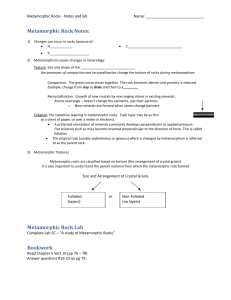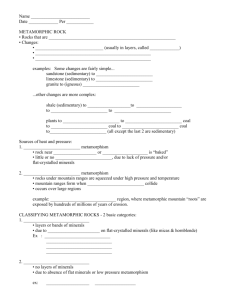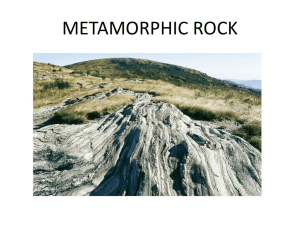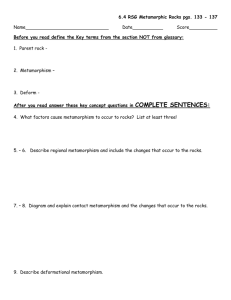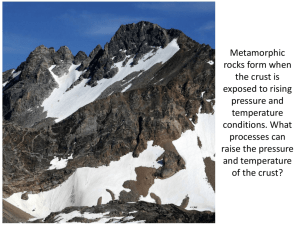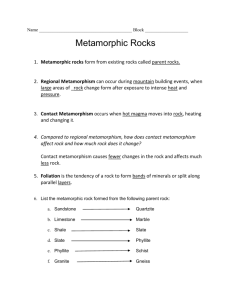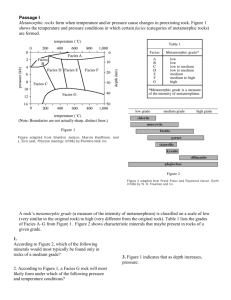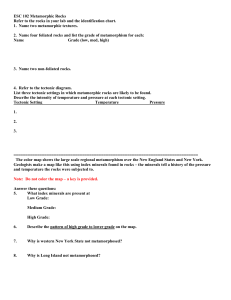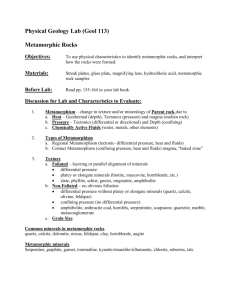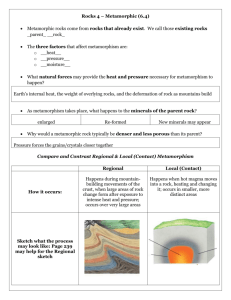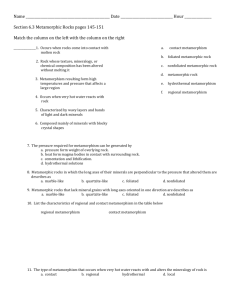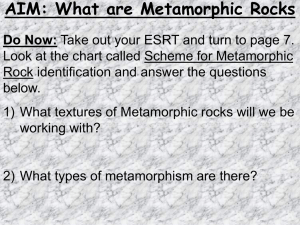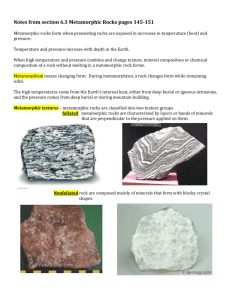جامعة بنها كلية العلوم الزمن ساعة ونصف قسم الجيولوجيا الفرقة الثالثة
advertisement
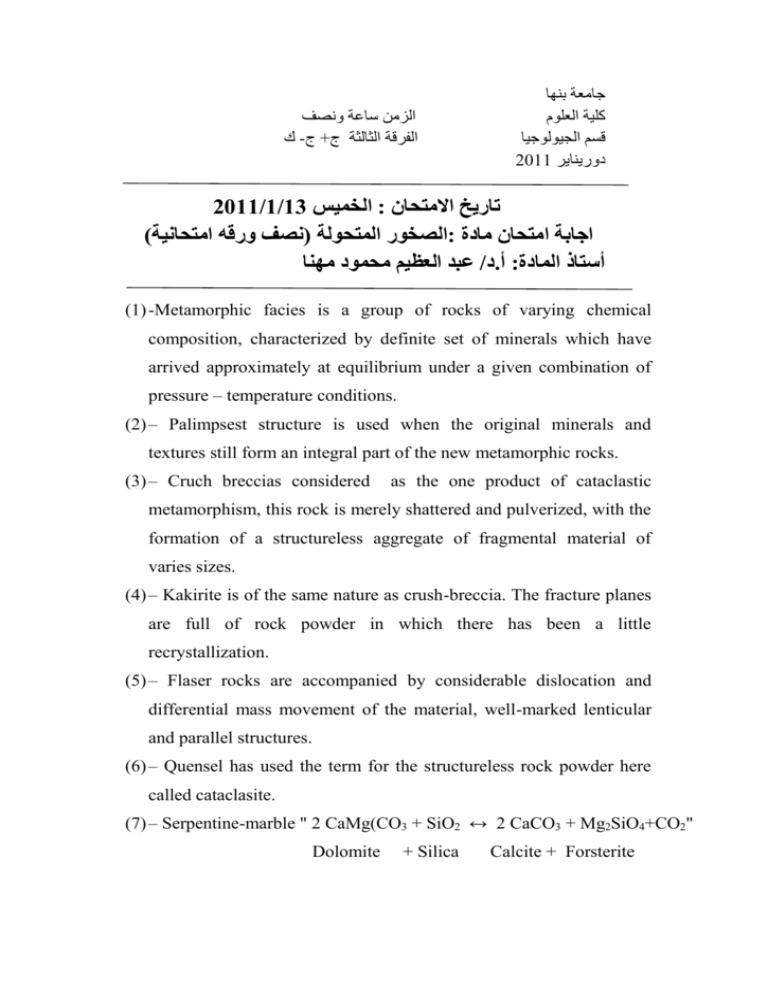
الزمن ساعة ونصف ك- ج+الفرقة الثالثة ج جامعة بنها كلية العلوم قسم الجيولوجيا 2011 دوريناير 2011/1/13 الخميس: تاريخ االمتحان )الصخور المتحولة (نصف ورقه امتحانية: اجابة امتحان مادة عبد العظيم محمود مهنا/د. أ:أستاذ المادة (1) -Metamorphic facies is a group of rocks of varying chemical composition, characterized by definite set of minerals which have arrived approximately at equilibrium under a given combination of pressure – temperature conditions. (2) – Palimpsest structure is used when the original minerals and textures still form an integral part of the new metamorphic rocks. (3) – Cruch breccias considered as the one product of cataclastic metamorphism, this rock is merely shattered and pulverized, with the formation of a structureless aggregate of fragmental material of varies sizes. (4) – Kakirite is of the same nature as crush-breccia. The fracture planes are full of rock powder in which there has been a little recrystallization. (5) – Flaser rocks are accompanied by considerable dislocation and differential mass movement of the material, well-marked lenticular and parallel structures. (6) – Quensel has used the term for the structureless rock powder here called cataclasite. (7) – Serpentine-marble " 2 CaMg(CO3 + SiO2 ↔ 2 CaCO3 + Mg2SiO4+CO2" Dolomite + Silica Calcite + Forsterite Dedolomitization of impure dolomite form the forsterite marble and the dehydration of forsterite formed the serpentine marble. (8)- Clay rocks are composed of particle of quartz + feldspars + flakes of mica and chloride + Hornfels hydrous aluminum silicates + iron-oxides and silica (9)- Anti-stress minerals such as anorthite, potash feldspars, augite, hyperthene, olivine, andalusite, sillimanite, cordierite and spinel formed due to uniform pressure. (10)- The ratio between length and thickness of the metamorphic minerals called the index of elongation. * Such as Biotite in Bi-granite have index of elongation = 1.5 in gneissose – granite, 5 in contact metamorphic Bi-schist and 6 to 7 in dynamic-metamorphosed mica schist. * Hornblende in igneous rock is about 2.5 but in HB-schist it is about 5. (11)- Siliceous clays and shales Honostone or "novaculite" (12)- Leptynites often have a parallel banded structure due to the streaky of elongation of quartz-grains and the alternation of bands of different mineral composition. (13)- Charnokite is granular hyperthene granite. (14)- Eclogite is a coarse-grained granulose rock consisting of garnet and pyroxene. Rutile, iron-oxides and apatite may occur as subordinate amounts, and various other minerals such as quartz, kyanite, sillimanite, feldspars, bronzite and olivine. (15)- Depth zones of metamorphism correlated with increasing depth into katamorphic zones and anamorphism but Grubenmann's has also distinguished three zones called epizone, mesozone and katazone. (16)- Grade of metamorphism refers to the stage or degree of metamorphism at which the rocks have arrived. (17)- Structure of metamorphic rocks such as cataclastic structures, macluse structures, schistose- structures, granulose structures and gneissose- structures. (18)- Hartschiefer formed due to recrystallization from mylonite or ultramylonite, as compact, dense, cherty or felsitic texture and exhibit banding of the most rigid parallelism and quantity of thickness. (19)- Amphibolite is used for hornblendic rock in which foliation gives place to granoblastic texture. (20)- Augen - gneiss have lenticles of relatively- unaltered material are preserved in finely - crushed and partially recrystallized matrix.






